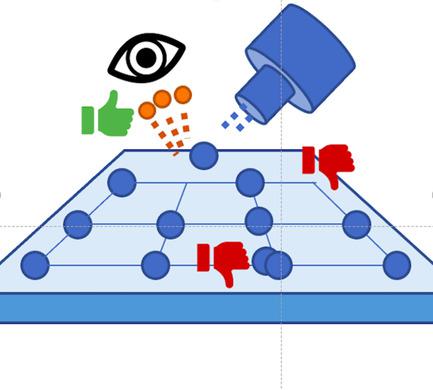当前位置:
X-MOL 学术
›
Phys. Status Solidi B
›
论文详情
Our official English website, www.x-mol.net, welcomes your
feedback! (Note: you will need to create a separate account there.)
Error Rates in Deterministic Ion Implantation for Qubit Arrays
Physica Status Solidi (B) - Basic Solid State Physics ( IF 1.5 ) Pub Date : 2021-03-02 , DOI: 10.1002/pssb.202000615 B. N. Murdin 1 , Nathan Cassidy 1 , David Cox 1 , Roger Webb 1 , Richard J. Curry 2
Physica Status Solidi (B) - Basic Solid State Physics ( IF 1.5 ) Pub Date : 2021-03-02 , DOI: 10.1002/pssb.202000615 B. N. Murdin 1 , Nathan Cassidy 1 , David Cox 1 , Roger Webb 1 , Richard J. Curry 2
Affiliation

|
The theoretical error rates in deterministic ion implantation when using an ion beam governed by a Poisson point process with a detector that counts the impacts are investigated. It is concluded that if the error rates are small, then for spots with nominally one implanted ion the probability of failure to implant the correct number is ≈ for a synchronous (i.e., pulsed) system or for an asynchronous (i.e., continuous beam) system, where is the probability that the detector misses an ion impact, and and are the number of ions (dark counts) per unit time and per pulse, respectively. ts is the system reaction time for an asynchronous system. This approximation allows easy identification of the greatest need for engineering effort. Some experimental efforts to measure these parameters and their uncertainties are examined.
中文翻译:

量子位阵列确定性离子注入的错误率
研究了在使用由泊松点过程控制的离子束和对撞击进行计数的检测器时确定性离子注入的理论误差率。得出的结论是,如果错误率很小,那么对于标称一个注入离子的点,注入正确数量失败的概率是 ≈ 对于同步(即脉冲)系统或 对于异步(即连续梁)系统,其中 是检测器错过离子撞击的概率,和 和 分别是每单位时间和每个脉冲的离子数(暗计数)。t s是异步系统的系统反应时间。这种近似可以轻松识别对工程工作的最大需求。检查了一些测量这些参数及其不确定性的实验工作。
更新日期:2021-03-02
中文翻译:

量子位阵列确定性离子注入的错误率
研究了在使用由泊松点过程控制的离子束和对撞击进行计数的检测器时确定性离子注入的理论误差率。得出的结论是,如果错误率很小,那么对于标称一个注入离子的点,注入正确数量失败的概率是 ≈ 对于同步(即脉冲)系统或 对于异步(即连续梁)系统,其中 是检测器错过离子撞击的概率,和 和 分别是每单位时间和每个脉冲的离子数(暗计数)。t s是异步系统的系统反应时间。这种近似可以轻松识别对工程工作的最大需求。检查了一些测量这些参数及其不确定性的实验工作。











































 京公网安备 11010802027423号
京公网安备 11010802027423号